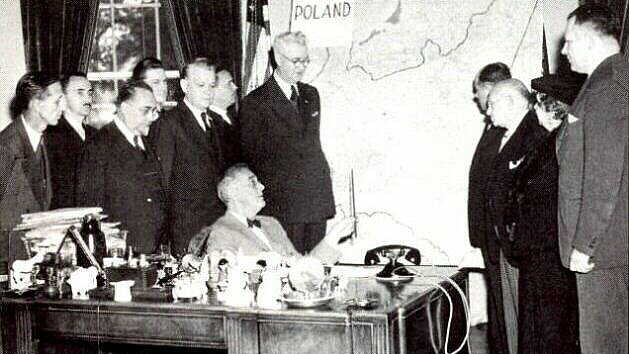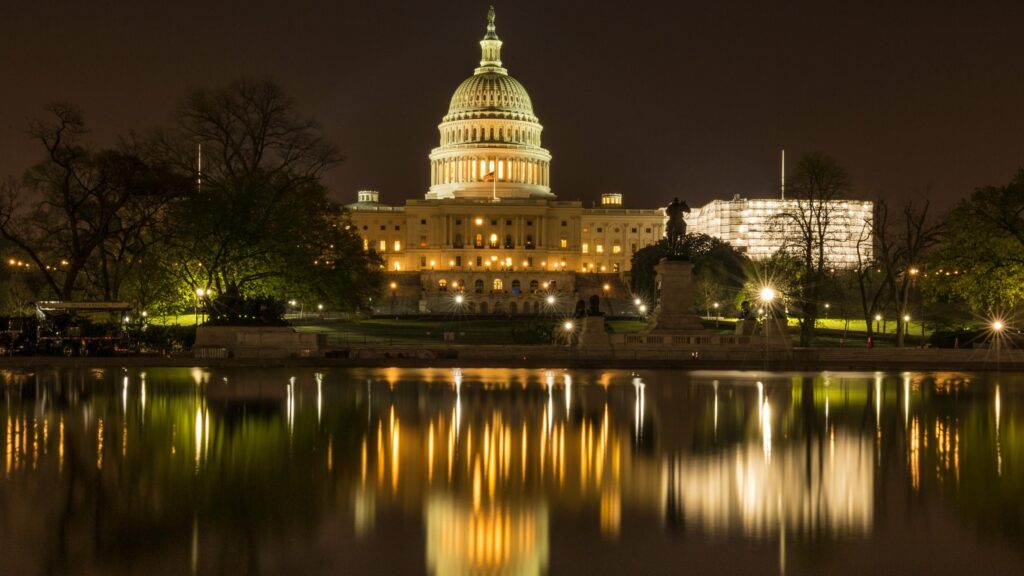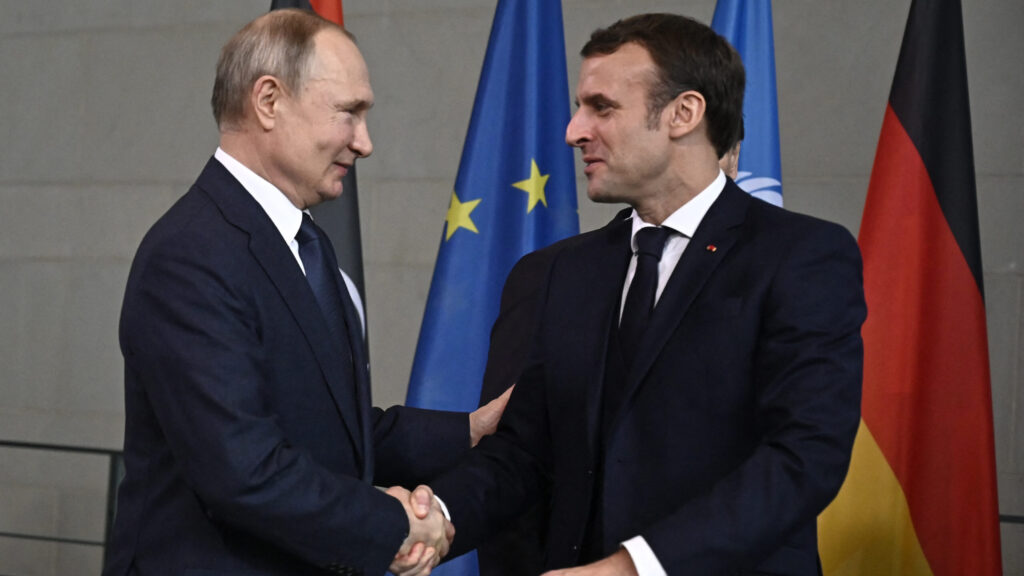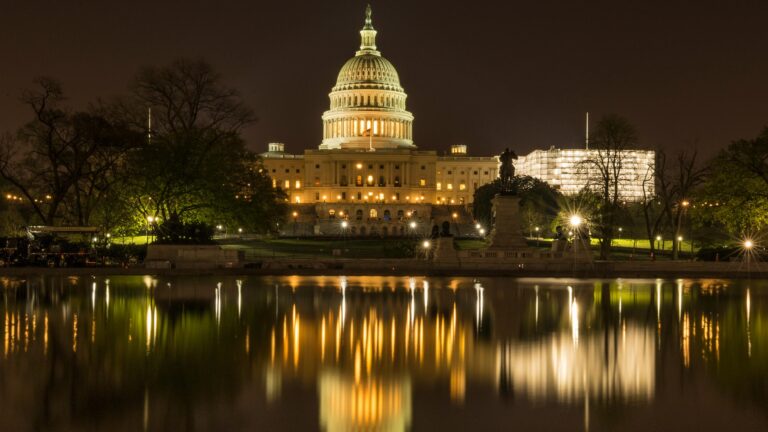America’s dueling presidential campaigns are desperately appealing to the small pool of persuadable voters, particularly in the critical Rust Belt states of Michigan, Pennsylvania, and Wisconsin. No political entreaty in these places should be surprising, but recent appeals to Polish Americans in the region have raised some eyebrows.
Vice President Kamala Harris unexpectedly mentioned the group during this month’s presidential debate. ‘Why don’t you tell the 800,000 Polish Americans right here in Pennsylvania how quickly you would give up [military activity in Ukraine] for the sake of favor and what you think is a friendship with what is known to be a dictator who would eat you for lunch?’ the Vice President taunted.
The comment can probably be attributed to her rhetorical limitations and her milieu’s obsession with Ukraine-related topics. Nonetheless, her campaign followed the comment with a Facebook ad directly aimed at Polish Americans, confirming at least some campaign strategists see demographic potential.
The Trump camp’s behavior also suggested the idea has substance. Last week, the campaign announced the former president would visit the National Shrine of Our Lady of Częstochowa in Doylestown, near Philadelphia, along with Polish President Andrzej Duda. The shrine contains a replica of the famous icon in Częstochowa, Poland, and it is a visible center of Polish culture in the United States.
Pro-Trump activist Jack Posobiec tweeted, ‘As a Polish American from PA, let me explain, this is a *massive* deal to Polish Americans in PA.’ (Nota bene: ‘PA’ is the official government abbreviation of Pennsylvania.) Newsweek published an article titled ‘How Polish American Voters Could Swing Election.’
Later in the week, the Trump campaign canceled the visit for unconfirmed reasons, though some speculated about the ability to guarantee sufficient security at the event, and others noted President Duda’s schedule would be consumed with flood relief at home. (He ultimately attended.)
The planned visit would not have been Trump’s first foray into Polish American campaigning. During the 2020 presidential race, the then-president sold merchandise emblazoned with the slogan Polish Americans for Trump. That marketing tactic might have built upon perceived lessons from the previous campaign. ‘[W]ithout the votes of Polish Americans, Donald Trump probably wouldn’t have won this election,’ asserted Polish American Trump adviser William Ciosek after the unexpected 2016 victory. ‘Trump’s campaign people understand it and give a lot of credit to the freedom-loving and freedom-fighting Polish American people, who literally helped us win the White House.’
High-level political operatives are embracing these narratives. But is there really a Polish American vote?
The Vice President’s stated figure of 800,000 people is a good place to start. American publications have similarly noted 7–10 per cent of the population claiming Polish heritage in the three key Rust Belt states. These figures link people with any number of degrees of separation from the mother country. Since most Polish immigration occurred in the late nineteenth and early twentieth century, most of these individuals are the product of multiple generations living on American soil.
In such cases, ‘Polishness’ has lost much, if not all, of its voting-bloc cohesiveness. First- and second-generation Polish immigrants tended to cluster in heavily Polish enclaves, and these communities mattered to canvassing politicians during the world wars and the Cold War. As generations have passed, Polish Americans have relocated from these enclaves to the suburbs or to entirely different states. Knowledge of family history is often limited to pictures, stories, and recipes.
‘“Polishness” has lost much, if not all, of its voting-bloc cohesiveness’
Hamtramck, Michigan, tucked inside the Detroit metro area, offers a prime example. In the twentieth century, it became a hub of Polish life in the United States, as Poles congregated in the area to work in the Detroit auto industry. As Hamtramck Poles realized the American Dream and left for the suburbs or warmer climes, other ethnic groups took their place. Hamtramck is now the only Muslim-majority city in the United States, and traces of its former Polish presence are limited to a couple shops and restaurants in the area. Cities like Buffalo, New York, and Erie, Pennsylvania, exhibit similar demographic trends.
At every home game, the professional baseball team in Pittsburgh holds a ‘pierogi race,’ in which pierogi mascots race along the outfield fence. It is a tribute to the immigrants from Poland and neighboring countries who flocked to the city’s steel mills and impacted the local culture. Pittsburgh still has some historic Polish churches and landmarks, and grocery stores often contain dedicated sections for pierogi and kielbasa, but Polish-speakers and recent arrivals from Poland are few.
More recent immigrants have arrived in the United States, especially during the decade following the fall of communism. These Poles might be more likely to hold cohesive group voting preferences, but they are heavily concentrated in the Chicago and New York metropolitan areas. Connecticut, Illinois, New Jersey, and New York, where most of these recent immigrants live, are certain Democratic states and will not impact the outcome of this election. These Poles’ voting patterns are revealing, in any case. Voters at the consulates in Chicago and New York, which have significant Polish populations, have tended to support the conservative Law & Justice party in recent elections. Voters at the other consulates—more likely to be high-income, pro-globalization expatriates—have opted for Donald Tusk’s Civic Coalition.
Then there is the categorization of Jewish citizens, tricky now in the United States as it was a century ago in Poland. Many Jewish-Americans can trace their ancestry to former or current Polish territories. Jewish assimilation into Polish society varied tremendously, the urban–rural divide was significant, and borders often shifted. Additionally, Jews remain one of the most party-loyal ethno-religious groups in the United States, so attributing Jewish voting behavior to ‘Polishness’ seems statistically unreasonable and analytically unhelpful.
‘More than a century of assimilation, intermarriage, economic success and the fraying of ties with the ancestral homeland over time have made the idea of a cohesive bloc of Polish American votes as outmoded as the idea that there is a cohesive bloc of votes from the other big white ethnic groups—English, German, Irish and Italian,’ summarizes Politico’s Charlie Mahtesian, who calls the idea of a Polish American vote a ‘mirage.’
For those whose hearts beat on both sides of the Atlantic, the more productive consideration is what this election signifies for U.S.–Poland relations. Poland, like the United States, is bitterly divided between cosmopolitan urban areas and more conservative and religious exurbs and rural areas. After eight years of single-party Law & Justice rule, Polish conservatives are momentarily weak and banking heavily on a second Trump administration. The war in Ukraine rages next door, as does the culture war at home. Poland escaped the last great recession, but that outcome is unlikely to repeat itself. Then there is the matter of Poland’s own presidential election, scheduled for 2025. The current landscape suggests a less-conservative figure will replace Duda, potentially giving the liberal ruling government unchecked legislative power.
All of this will have enormous policy implications for Poles, Americans, and Polish Americans. The Polish American voter is a mirage from a conventional electoral perspective, but Poland will surely remain entrenched on the next president’s policy agenda.
Related articles:







